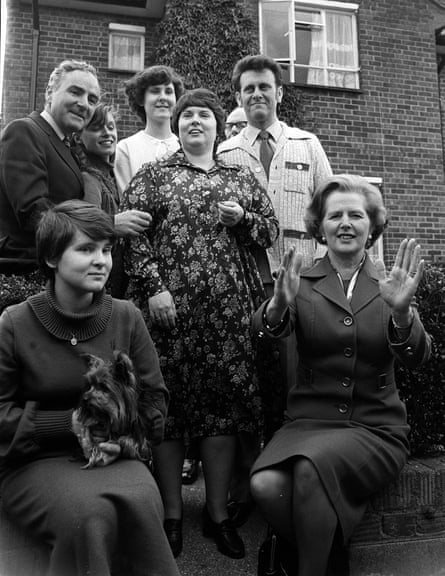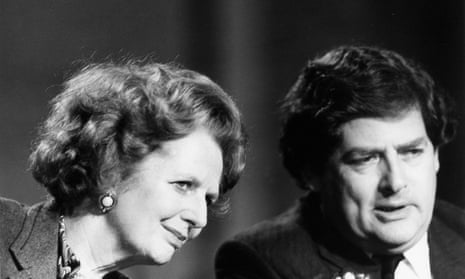From the moment of its introduction on 3 October 1980, right to buy has been a divisive and controversial policy. Supporters argue it gives the aspirational working class the opportunity to own their own home and improve their financial circumstances: opponents say it amounts to a sub-market flogging of public assets and has caused distorted house prices, substantially contributing to the housing crisis.
Those against the policy spanned the political divide – with some Conservatives against the undervaluing and flogging of assets, finding themselves on the same side as Labour MPs defending state-owned housing.
But the take up has been huge: since the introduction of right to buy more than 1.8m council homes have been sold at a discount.
1980 – genesis of an idea
Margaret Thatcher is seen as the face of right to buy: as much as the poll tax, it’s viewed as one of the defining policies of her time in office. But Thatcher took a while to be convinced of the policy, initially worried at the prospect of selling off potentially valuable state assets for far less than they were currently worth.
The Housing Act 1980 included many incentives to encourage take up of right to buy, including:
- Offering tenants who had lived in their home for up to three years a 33% discount on the market value of their house.
- Increasing in stages up to 50% for a tenancy of 20 years.
- The opportunity to put down a £100 deposit, stalling the sale for two years, then buying at the earlier value.
- Guaranteed 100% mortgages available from the local authority.
Take up was high, but this dropped during the mid 1980s because of high unemployment, inflation, and the recession in the early 1990s.

1999 – cooling down
Under New Labour, the cracks started to show in the policy as few new homes were built, and many were worried at the sheer number of council homes that had been sold. Under Tony Blair, the Labour government moved to reduce the discount available to tenants to £25,000 in 1999.
2012 – right to buy 2.0
To boost home ownership during the recession, David Cameron unveiled a proposal to dramatically increase the discount available to council tenants wishing to buy.
The maximum discount is £77,900 across England, except in London boroughs where it’s £103,900.The increased discount saw numbers more than quadruple from 3,744 sales in 2012-13 to 16,519 in 2014-15.
2015 – expansion
As part of Conservative manifesto commitments, George Osborne revealed right to buy would be extended to housing association properties. This opens up right to buy to an additional 1.3m households, without addressing the net housing shortage and difficulties in building new homes faced by local authorities and housing associations.
Meanwhile, former right-to-buy homes have made headlines for fetching eye-watering sums on resale. In August 2015, an ex-council flat in Covent Garden fetched £1.2m.
One of the first right-to-buy homes was visited for a photo opportunity by Thatcher, who handed over the deeds to the buyers. The house on Amersham Road, near Romford, Essex, was bought by the Pattersons in August 1980 for £8,315 with a deposit of £5. It was sold for 21 times its original value in 2013, for £180,000. Property website Zoopla, lists its current estimated value as around £250,000. But the financial strain of the mortgage reportedly contributed to the breakup of the Patterson’s marriage.
Where next?
Scotland and Wales are currently less keen than England on the policy, with the Scottish government moving to ban all sales of council homes by 1 August 2016. The Welsh government are planning to abolish right to buy, and have slashed the discount available to £8,000. Right-to-buy sales in Wales have been in the low hundreds for several years, and have totalled around 180,000 since 1980.
For the foreseeable future, right-to-buy transactions will increase in England, but will never reach the staggering heights of the 1980s for one reason: with fewer council homes built, there are fewer to sell. Between April 2012 and November 2015 a total of 40,603 homes were sold under right to buy. Over the same period, work began on a mere 3,694 properties funded by the proceeds – a replacement rate of around one home for every 11 sold. The fact that few council homes were replaced, and never on a like-for-like basis, is the most damaging long-term legacy of the right-to-buy policy.
Sign up for your free Guardian Housing network newsletter with news and analysis sent direct to you every Friday. Follow us: @GuardianHousing

Comments (…)
Sign in or create your Guardian account to join the discussion